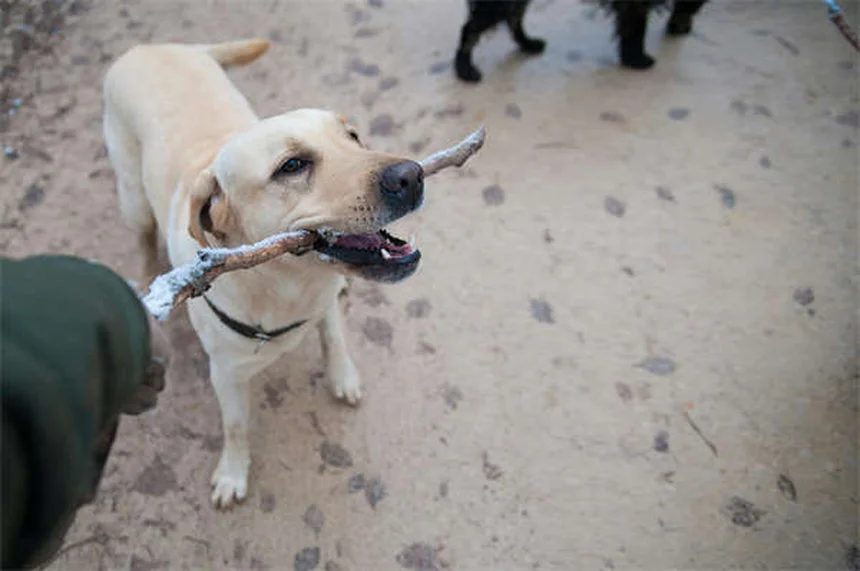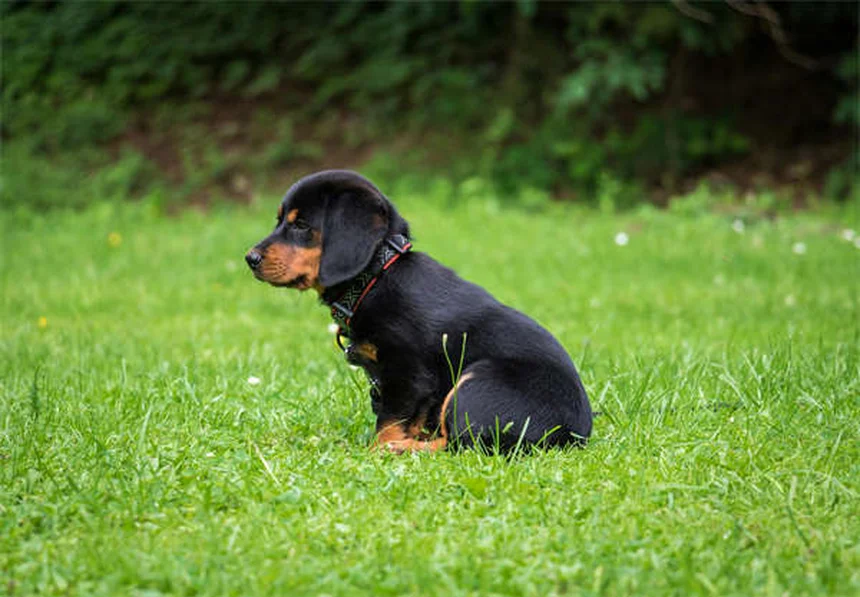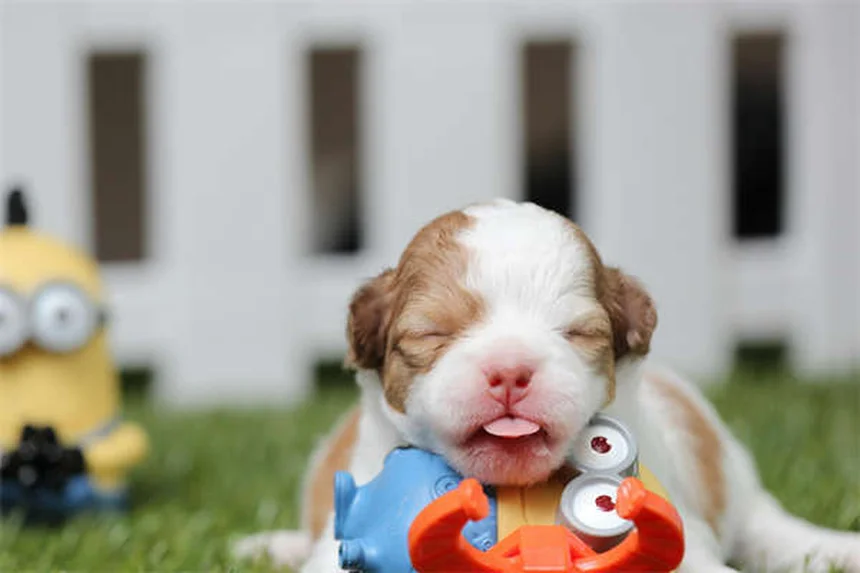Advertisement
What is pododermatitis in rabbits? The answer is simple: it's a painful foot condition that can seriously impact your bunny's health. Pododermatitis, commonly called sore hocks, occurs when the delicate skin on your rabbit's feet becomes inflamed and damaged. I've seen too many cases where owners didn't recognize the early signs until it was too late - that's why I'm sharing these crucial warning signals with you today.Here's the deal: rabbits don't have protective foot pads like other pets. Their feet rely entirely on thick fur for cushioning. When that fur wears away, constant pressure leads to redness, sores, and even bone infections if left untreated. The good news? If you catch it early, you can prevent most serious complications. Let me walk you through exactly what to look for in your bunny's feet during your next cuddle session.
E.g. :5 Most Common Dog Cancers: Symptoms & Treatments You Should Know
- 1、Understanding Rabbit Foot Problems
- 2、Spotting the Warning Signs
- 3、Common Causes You Should Know
- 4、Diagnosis: What to Expect at the Vet
- 5、Treatment Options That Work
- 6、Prevention: Better Than Cure
- 7、When to Seek Emergency Care
- 8、Beyond the Basics: Additional Rabbit Foot Care Insights
- 9、Rabbit Foot Care Myths Debunked
- 10、Alternative Therapies Worth Considering
- 11、Understanding Your Rabbit's Unique Needs
- 12、Building a Foot-Friendly Routine
- 13、FAQs
Understanding Rabbit Foot Problems
What Exactly is Pododermatitis?
Let me tell you about this sneaky foot condition that bothers our fluffy friends. Pododermatitis - sounds complicated, right? It's basically just a fancy word for "sore feet" in rabbits. Imagine walking barefoot on hot pavement all day - that's how uncomfortable this can get for bunnies!
Here's the deal: rabbits don't have those squishy foot pads like dogs or cats. Instead, they've got thick fur covering super thin skin on their feet. When that protective fur disappears, trouble starts brewing. The constant pressure on their delicate feet can lead to inflammation, ulcers, and even serious infections if we don't catch it early.
Why Rabbit Feet Are Different
You know how we wear shoes to protect our feet? Well, rabbits rely entirely on their fur for cushioning. Some breeds like Rex rabbits have naturally thinner fur on their feet, making them more vulnerable. And those big, beautiful giant breeds? All that extra weight puts more pressure on their feet too.
Ever seen a rabbit thump its back feet when it's mad? That adorable behavior actually increases their risk of developing foot problems later. It's like repeatedly slapping your bare hand on a table - eventually, it's going to hurt!
Spotting the Warning Signs
 Photos provided by pixabay
Photos provided by pixabay
Early Symptoms You Can't Miss
Let's play detective! Here's what to look for when checking your bunny's feet:
- Bald patches on the bottom of feet
- Red, angry-looking skin
- Swelling that makes the feet look puffy
- Your rabbit favoring one foot or limping
Did you know rabbits are masters at hiding pain? They'll keep hopping around even when their feet hurt. That's why we need to be extra observant. If your bunny suddenly becomes less active or stops doing its happy jumps, it might be trying to tell you something's wrong.
When Things Get Serious
If we ignore those early signs, things can go downhill fast. Here's what advanced pododermatitis looks like:
| Mild Case | Severe Case |
|---|---|
| Red skin | Open, bleeding sores |
| Slight limping | Refusal to move |
| Small bald spots | Bone infections |
The scary part? Untreated foot problems can actually change how a rabbit's foot works permanently. That tendon in their foot might shift out of place, making it impossible for them to hop normally ever again.
Common Causes You Should Know
Flooring Fails
Think about where your rabbit spends most of its time. Hard surfaces like wire cages or bare floors are the worst offenders. It's like making someone stand on concrete all day without shoes!
Here's a pro tip: If you can't comfortably walk barefoot on your rabbit's flooring, neither can they! Soft surfaces are key - think thick mats, fluffy bedding, or even a layer of clean hay.
 Photos provided by pixabay
Photos provided by pixabay
Early Symptoms You Can't Miss
Ever heard the saying "heavy is the head that wears the crown"? Well, heavy is the foot that carries extra weight! Overweight rabbits have more pressure on their feet, plain and simple.
But here's something you might not expect - inactive rabbits are at risk too. Without regular movement, blood circulation decreases, making foot problems more likely. It's a classic case of "use it or lose it" when it comes to healthy feet.
Diagnosis: What to Expect at the Vet
The Physical Exam
When you bring your bunny in for foot trouble, the vet will do a thorough check-up. They'll examine every inch of those furry feet, checking for sores, swelling, or tender spots. You might see them watch how your rabbit hops around too - it's like a bunny gait analysis!
Why is this important? Because early detection makes all the difference. Catching foot problems before they become severe means simpler treatment and faster healing. It's the difference between putting on a band-aid and needing major surgery.
Advanced Testing
For serious cases, your vet might recommend:
- X-rays to check for bone damage
- Blood tests to look for infection
- Swabs of any wounds to identify bacteria
Here's a question you might be wondering: "Do all foot problems require these tests?" Not always! Mild cases might just need a visual exam. But if there's swelling that won't go away or your rabbit seems really sick, these tests help pinpoint the exact problem.
Treatment Options That Work
 Photos provided by pixabay
Photos provided by pixabay
Early Symptoms You Can't Miss
First things first - let's make that living space foot-friendly! Ditch any hard flooring and replace it with soft alternatives. My personal favorite? Those thick puzzle-piece exercise mats. They're affordable, easy to clean, and provide great cushioning.
Other home treatments include:
- Daily foot baths with warm water (gentle ones!)
- Applying vet-approved ointments
- Keeping bedding extra clean and dry
Remember that overweight bunny we talked about? Now's the time for some gentle weight loss. More exercise (as much as their sore feet allow) and proper diet can work wonders.
Medical Interventions
For serious cases, your vet might suggest:
- Antibiotics for infections
- Pain medication to keep them comfortable
- Special bandages or even little rabbit boots
Here's another question rabbit owners often ask: "Will my bunny's feet ever fully heal?" The honest answer? It depends. Mild cases often recover completely with proper care. But severe damage might leave some permanent changes. The key is stopping the problem before it gets that bad!
Prevention: Better Than Cure
Creating the Perfect Bunny Pad
Let's talk real estate - bunny style! Your rabbit's home should be spacious enough for at least three full hops in any direction. And the flooring? Soft, supportive, and changed regularly.
I recommend this simple test: kneel on your rabbit's flooring for 30 seconds. If your knees start complaining, your bunny's feet definitely are! Time to add more cushioning.
Daily Habits for Healthy Feet
Preventing foot problems isn't complicated, but it does require consistency:
- Daily foot checks (make it part of cuddle time!)
- Regular exercise outside the cage
- Proper nail trims (long nails change how feet hit the ground)
The best part? These simple steps don't just prevent foot issues - they make for a happier, healthier rabbit overall. It's a win-win!
When to Seek Emergency Care
Red Flags You Shouldn't Ignore
Some situations need immediate vet attention:
- Bleeding that won't stop
- Your rabbit refusing to put weight on a foot
- Swelling that's getting worse quickly
Remember, rabbits are prey animals - they'll hide pain until they can't anymore. If your normally active bunny suddenly becomes a couch potato, don't wait to get help.
Long-Term Management
For rabbits with chronic foot issues, ongoing care is crucial. This might include:
- Special orthopedic bedding
- Regular vet check-ups
- Weight management plans
The good news? With proper care, even rabbits with serious foot problems can live comfortable, happy lives. It just takes some extra TLC from their favorite human - you!
Beyond the Basics: Additional Rabbit Foot Care Insights
The Hidden Dangers of Damp Environments
You wouldn't want to walk around in wet socks all day, right? Well, rabbits feel the same way about damp bedding! Moisture is public enemy number one when it comes to healthy rabbit feet. That cute little water bottle that drips? The pee corner that doesn't get cleaned often enough? These create perfect conditions for foot problems to develop.
Here's something most rabbit owners don't realize - urine scald can happen even without direct contact. The ammonia fumes from soiled bedding can irritate delicate foot skin. I recommend checking bedding moisture levels twice daily and doing complete changes at least twice a week. Pro tip: Place a small ceramic tile in the litter area - it stays cooler and helps evaporate moisture faster!
Seasonal Considerations for Rabbit Feet
Did you know rabbit foot care needs change with the seasons? In summer, concrete floors can get scorching hot, while in winter, cold surfaces may cause circulation issues. Your rabbit's feet are like tiny weather sensors - they'll show problems before you notice other signs of discomfort.
Let me share a quick seasonal checklist:
- Summer: Provide cool ceramic tiles to lie on
- Winter: Add extra bedding layers for insulation
- Rainy seasons: Watch for dampness in outdoor hutches
- Spring: Check for allergies that might cause excessive grooming
Rabbit Foot Care Myths Debunked
"Wire Bottom Cages Are Fine If You Add Mats"
This common belief needs to be addressed head-on. Even with mats, wire floors create uneven pressure points that can lead to trouble. Think about it - would you be comfortable standing on a metal grate all day, even with socks on?
The science behind this is fascinating. Rabbits distribute their weight differently than we do, with most pressure on their hind feet. Wire cages concentrate this pressure on small areas, increasing injury risk exponentially. Solid flooring with proper bedding isn't just better - it's essential for long-term foot health.
"My Rabbit Doesn't Need Foot Checks Because It's Always Indoors"
Here's a wake-up call: indoor rabbits actually face unique foot challenges! Central heating dries out their skin, while smooth floors can cause splay leg over time. Indoor doesn't automatically mean safer when it comes to foot health.
I've seen more cases of pododermatitis in apartment rabbits than in outdoor ones, simply because owners assume they're protected. The truth? All rabbits need regular foot inspections, regardless of living situation. Make it part of your weekly grooming routine - your bunny will thank you!
Alternative Therapies Worth Considering
The Power of Physical Therapy
When we think about rehabilitating sore feet, we often overlook simple physical therapy techniques. Gentle massage, controlled exercise, and hydrotherapy can work wonders for recovery. Did you know that just 5 minutes of daily foot massage can improve circulation by up to 40% in rabbits with foot problems?
Here's how to do it safely:
- Support the foot gently in your palm
- Use your thumb to make small circular motions
- Never press directly on sore spots
- Keep sessions short and positive
Nutritional Support for Healthy Feet
What goes into your rabbit affects what comes out of its feet! Proper nutrition plays a huge role in maintaining healthy skin and fur. Essential fatty acids, particularly omega-3s, can make foot fur grow back thicker and more protective.
Consider adding these foot-friendly foods to your rabbit's diet:
| Food | Benefit | How Often |
|---|---|---|
| Flax seeds | Rich in omega-3s | 1/4 tsp weekly |
| Fresh parsley | High in vitamin C | Few sprigs daily |
| Oat hay | Supports healthy skin | Unlimited |
Understanding Your Rabbit's Unique Needs
Breed-Specific Foot Care Considerations
Not all rabbit feet are created equal! Some breeds need special attention. Giant breeds like Flemish Giants require extra padding due to their weight, while tiny Netherland Dwarfs need protection from jumping injuries. Rex rabbits, with their velvety fur, are particularly prone to foot problems because their foot fur is naturally thinner.
Here's something interesting - lop-eared rabbits often have different weight distribution than upright-eared breeds. Their center of gravity shifts forward, putting more pressure on front feet. Knowing your rabbit's breed characteristics helps you anticipate potential foot issues before they arise.
Age-Related Foot Changes
Just like humans, rabbits experience foot changes as they age. Senior rabbits often develop thinner foot pads and may need orthopedic support. Did you know that arthritis frequently shows up first in rabbit feet? Those stiff hops in the morning might be more than just grumpiness!
For older rabbits, I recommend:
- Softer, deeper bedding
- Lower litter box sides
- Gentle foot soaks with Epsom salts
- More frequent but shorter exercise sessions
Building a Foot-Friendly Routine
Making Foot Care Fun for Your Rabbit
Let's face it - most rabbits aren't thrilled about having their feet handled. But with positive reinforcement, you can turn foot checks into bonding time! Try pairing inspections with favorite treats or gentle petting. Pro tip: Start by briefly touching feet during normal petting sessions, gradually increasing contact time.
Here's a question many rabbit owners ask: "How can I tell if my rabbit is tolerating foot care or actually enjoying it?" Watch for relaxed body language - ears forward, eyes half-closed, and no attempts to escape mean you're doing great! Tense muscles or thumping mean you should go slower.
Creating a Foot Care Emergency Kit
Every rabbit owner should have basic foot care supplies on hand. You don't need fancy equipment - just these essentials:
- Vet-approved antiseptic solution
- Soft gauze pads
- Self-adhering vet wrap (never use regular tape!)
- Saline solution for rinsing
- Digital thermometer to check for fever
Store everything in a clearly labeled container where you can grab it quickly. Trust me, when you notice a foot problem at 10 PM on a Sunday, you'll be glad you prepared in advance!
E.g. :Pododermatitis in Rabbits | PetMD
FAQs
Q: How can I tell if my rabbit has pododermatitis?
A: Look for these telltale signs during your regular bunny foot checks: bald spots on the bottom of feet, red or swollen skin, and changes in how your rabbit moves. You might notice your bunny shifting weight frequently or avoiding putting pressure on sore feet. Early detection is crucial - I recommend checking your rabbit's feet at least once a week. Gently lift each foot and examine between the toes too. If you see any redness or hair loss, it's time to make some changes to their environment and consider a vet visit.
Q: What surfaces are safest for preventing pododermatitis?
A: The best flooring mimics what wild rabbits enjoy - soft, yielding surfaces that distribute weight evenly. I always tell my clients to use thick exercise mats, deep hay bedding, or fleece blankets. Here's a pro tip: if you wouldn't walk barefoot on it all day, neither should your rabbit! Avoid wire cages, hard plastic, and bare floors at all costs. For extra protection in problem cases, consider adding a layer of soft peat moss under the bedding - it provides amazing cushioning while absorbing moisture.
Q: Can overweight rabbits develop pododermatitis more easily?
A: Absolutely! Extra weight means extra pressure on those delicate feet. I've treated many cases where weight loss alone significantly improved foot health. But here's something most owners don't realize - underweight rabbits can develop problems too! Without proper muscle and fat padding, bones press more directly on the skin. The key is maintaining your rabbit at an ideal body condition - you should be able to feel (but not see) their ribs with gentle pressure. Ask your vet to show you how to assess your bunny's weight properly.
Q: Are some rabbit breeds more prone to foot problems?
A: Yes, certain breeds definitely have higher risks. Rex rabbits top the list because their famously soft fur is thinner on their feet. Giant breeds like Flemish Giants face challenges due to their size - all that weight puts tremendous pressure on their feet. Even dwarf breeds aren't completely safe if they have poor conformation. The best approach? Know your rabbit's risks and take preventative measures early. For high-risk bunnies, I recommend starting protective measures like soft flooring before any problems appear.
Q: How often should I change my rabbit's bedding to prevent foot issues?
A: Daily changes are ideal, especially in areas where your rabbit spends most of its time. Damp or soiled bedding is one of the fastest ways to develop foot problems. Here's my cleaning routine that works wonders: completely replace wet spots immediately, do a full bedding change every 1-2 days, and deep clean the entire enclosure weekly. Pro tip: layer your bedding system - start with absorbent material like aspen shavings on bottom, then add soft hay on top. This keeps feet dry while providing cushioning. Your nose will tell you when it's time to clean - if you can smell ammonia, you've waited too long!







